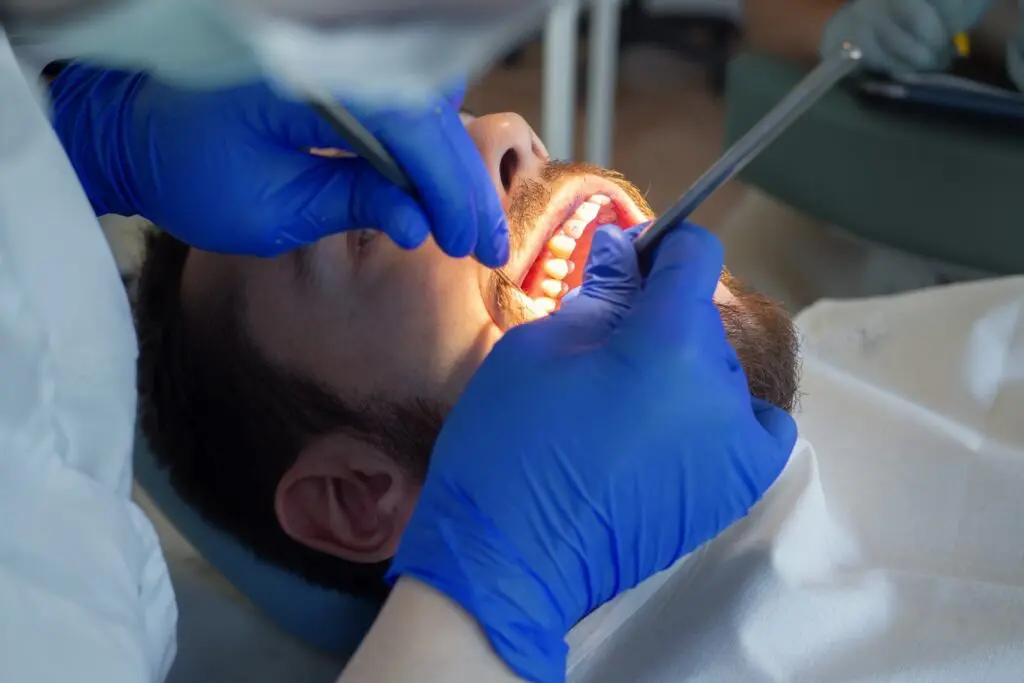
07 Feb West Kelowna Dentist: How to Treat Gum Disease
Gum Disease, also known as Periodontitis, commonly begins with bacterial growth in your mouth. If not treated properly, it can result in tooth loss, due to the destruction of the tissue surrounding your teeth. Gingivitis, which is gum inflammation, typically happens before periodontitis, and most people will get it at some point in their lives. Because of its mild symptoms, it is easy to ignore, but if left untreated too long, it can lead to bigger problems.
There are a variety of different treatments available, so we’ve outlined some of the different gum disease treatments available at our West Kelowna dental office.
Kelowna Gum Disease Treatment: What Causes Gum Disease?
The general buildup of bacteria, specifically plaque, is the primary cause of gum disease. If you don’t brush, floss, or rinse your mouth regularly, bacteria will cling to your teeth to create plaque, which then hardens into tartar. Over time, this buildup of plaque and tartar can irritate and inflame your gums, causing gingivitis.
When someone has gum disease, the inner layer of the gum and bone pull away from the teeth and will form pockets. These small pockets will collect debris and bacteria and can become infected. The bacteria in these pockets will start to break down the bone and connective tissue that holds your teeth in place.
Aside from bacteria, there are a few other things that can cause gum disease, including:
- Hormonal changes
- Illness
- Medications
- Bad habits
- Poor oral hygiene habits
- Family history of dental disease
Non-Surgical Treatments
The good news is that there are different treatment options available if you have gum disease, including a few that don’t require surgery. Having your teeth professionally cleaned regularly is a great way to help minimize the risk of gum disease. During a cleaning, your dentist or dental hygienist will remove the plaque and tartar from your teeth, both above and below the gum line.
Another non-surgical treatment is scaling and root planing. This is a deep-cleaning procedure done under a local anesthetic where the plaque and tartar both above and below the gum line is scraped away (scaling). Any rough spots on your teeth are made smooth (planing), which helps remove bacteria and provides a clean surface for the gums to reattach to the teeth.
Surgical Treatments
In some instances, people with gum disease might require a more intense treatment, which can involve surgery. In some cases, flap, or pocket reduction surgery might be required. In this procedure, the gums are lifted back and the tartar is removed. The gums are then placed so that the tissue fits snuggly around the tooth. Bone grafts might be needed to replace bone that has been damaged by gum disease. Bone surgery can be required after flap surgery to help smooth out the shallow craters in the teeth, therefore making it harder for bacteria to collect.
Soft tissue grafts help to reinforce the gums or fill in any places where the gums have receded, and guided tissue regeneration is performed when the bone supporting your teeth has been destroyed. This procedure is done in combination with flap surgery and helps to stimulate bone and gum tissue growth.
With proper oral hygiene and care, you can help minimize your risk of developing gingivitis and gum disease. If you happen to develop gum disease, there are lots of different treatment options available that can help keep your smile looking bright and healthy!




